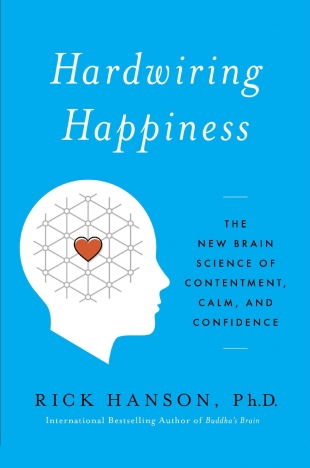"It takes a little effort to take in the good, especially in the beginning. Plus you might have some internal blocks to doing it, such as the belief that it's selfish to feel good. Motivation is the key to sticking with anything, thus it helps to know why taking in the good is good for you and others. So I'd like to summarize the benefits of this practice.
"By taking just a few extra seconds to stay with a positive experience — even the comfort in a single breath — you'll help turn a passing mental state into lasting neural structure. Over time, you can fill up your inner storehouse with the strengths you need, such as feeling at ease rather than irritable, loved rather than mistreated, and resourced rather than running on empty. These strengths will foster well-being and effectiveness, heal psychological issues such as anxiety, and support creativity, self-actualization, and spiritual practice.
"Inherently, taking in the good is a way to be active rather than passive — a hammer rather than a nail — at a time when many people feel pushed and prodded by events and their reactions to them. It's also a way to treat yourself like you matter, which is especially important if others haven't. This practice brings you into the present moment and reduces rumination, that repetitive rehashing of things in your mind that fosters mental and physical health problems. It teaches you to have more control over your attention, so you can keep it on what's good for you and others and pull it away from what's bad. All the while, you'll be sensitizing your brain to positive experiences, making it like Velcro for the good — a far-reaching benefit.
"Growing your inner strengths through taking in the good is like deepening the keel of a sailboat so that it's less jostled by the worldly winds, it recovers more quickly from big storms, and you can now safely head out into deeper waters in pursuit of your dreams. You'll be turning moments of hedonic well-being into a more fundamental ongoing sense of fulfillment and meaning: what's called eudaimonic well-being. In a positive circle, feeling better helps you act better, which helps the world treat you better, which helps you feel better.
"Taking in the good is not about chasing after pleasure or chasing away pain. It's about bringing the chase to an end. When you get good experiences into your brain — when you build up the sense of being already peaceful, contented, and loved — your well-being becomes increasingly unconditional, less dependent on external conditions such as a partner being nice or a good day at work. As your positive mental states become positive neural traits, you'll gradually rest in a happiness that emerges naturally inside you. . . .
"• Taking in the good is the deliberate internalization of positive experiences in implicit memory. It involves four simple steps (the fourth one is optional). (1) Have a positive experience. (2) Enrich it. (3) Absorb it. (4) Link positive and negative material. The first letter of each step forms the acronym HEAL. Step 1 activates a positive experience, and steps 2 to 4 install it in your brain.
• It's natural to take in the good. We all know its essence: have a positive experience and then really enjoy it. But as with any other skill, you can get better at it through both learning and practice.
• Most positive experiences are relatively brief and mild. But taking in half a dozen of them a day, half a minute or less at a time, will add up to something big for you.
• You can take in good experiences both in the flow of daily life and during special times such as at a meal or just before bed.
• Taking in the good involves being a good friend to yourself. If this is hard for you, as it is for many people, you can deliberately create and take in experiences of being on your own side.
• Some experiences are particularly valuable to take in. When your brain's avoiding harms system is threatened, you need key experiences that are directly related to it, such as a sense of protection or strength. The same is true for the approaching and attaching systems. You can use the HEAL steps to look for and take in the experiences that would really help you these days.
• Drawing on the hidden power of seemingly ordinary experiences, this deceptively simple practice builds resilience, heals distress and dysfunction, improves relationships, promotes physical health, and grows a durable happiness."
